










Analista especializada en América Latina y el Caribe
Cuba se esfuerza por potenciar y diver sificar las exportaciones, y para ello consolida los actuales vínculos comer ciales, certifica nuevas producciones y bus ca abrirse paso en otros mercados; al tiem po que nuevos actores irrumpen en su entra mado económico y comercial, lo que pudiera enriquecer la variedad de productos exporta bles y, sobre todo, potenciar el desarrollo te rritorial: ese constituye un propósito primor dial para una sociedad como la cubana, que busca su sustentabilidad.

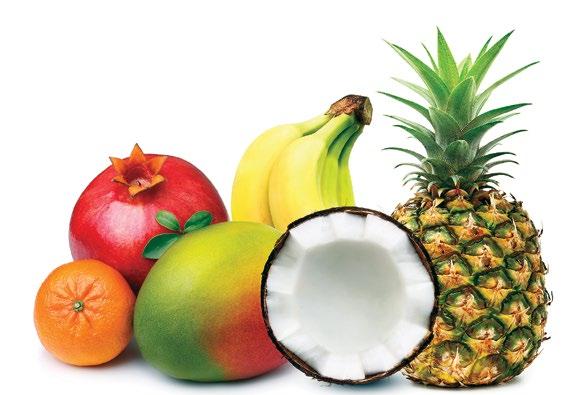
AFTER the blow that the COVID-19 scourge has meant for the island’s foreign trade, Cuba is striv ing to boost and diversify exports. To this end, it is consolidating current commercial ties, certify ing new productions and seeking to break into oth er markets, while new actors are breaking into its economic and commercial framework, which could enrich the variety of export products and, above all, promote territorial development: that is a fun damental purpose for a society like the Cuban one, which is seeking to be sustainable.
About these issues TTC spoke with Vivian Herrera Cid, general director of foreign trade of the Cuban Ministry of Foreign Trade and For eign Investment.
How did our foreign trade balance behave last year?
Exports of goods grew by 17 percent in val ue compared to December 2020, conditioned by the increase in sales prices of nickel and its man ufactures, pharmaceutical products and tobac co.
Acerca de estos asuntos TTC conversó con Vivian Herrera Cid, directora general de Co mercio Exterior del Ministerio de Comercio Exterior y la Inversión Extranjera de Cuba.
—¿Cómo se comportó el balance de nuestro comercio exterior el año pasado?
—Las exportaciones de bienes crecen un 17 por ciento en valores respecto a diciembre de 2020, condicionado por el incremento de los precios de las ventas del níquel y sus ma nufacturas, los productos farmacéuticos y el tabaco.
«Las exportaciones de servicios disminu yen sensiblemente respecto a diciembre de 2020, condicionado por la reducción de los servicios turísticos debido a la situación epi demiológica. Sin embargo, los servicios de salud cobran mayor protagonismo en las ex portaciones.
—Para cuando llegó la pandemia ya estaba planteado el propósito de Cuba de potenciar to das las fuerzas productivas, lo que ha origina do el surgimiento de nuevos actores económi cos. ¿Cuáles son esos actores y cuánto pudieran representar para dinamizar la economía nacio nal?
—Desde agosto de 2020, se aprobó un cuerpo normativo con cuatro normas funda mentales emitidas por los ministerios de Fi nanzas y Precios, Economía y Planificación, el Banco Central de Cuba y el Ministerio de Co mercio Exterior y la Inversión Extranjera, que establecen el trabajo de las empresas de co mercio exterior para brindarle servicios de importación y exportación a las formas de gestión no estatales.
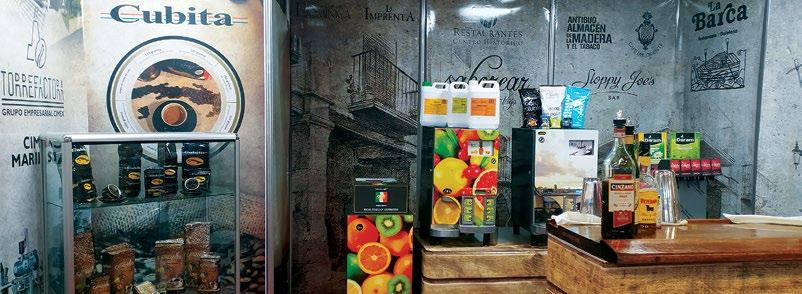
«En nuestro abanico de atención están las micro, pequeñas y medianas empresas (mi pymes), que constituyen una de esas formas de gestión no estatal, así como otras formas no estatales como los trabajadores por cuen ta propia (privados), las cooperativas de todo tipo, los creadores, los campesinos indepen dientes, entre otros.
«Todos esos actores tienen la posibilidad de vender sus producciones, ya sean de ser vicios o de bienes a las entidades de comer cio exterior autorizadas, para que estas les realicen las actividades relativas al comercio exterior.
«Esas empresas estatales son prestatarias de servicios; ellas salen al exterior a hacer las contrataciones y les pagan a las formas de gestión no estatales los productos o servicios que ellos acuerdan, en el caso de las exporta ciones, y les compran en caso de las impor taciones.
«Además resulta importante que se están estableciendo alianzas de significación con algunas empresas estatales y algunos polos productivos exportadores.
«Al propio tiempo, se están ejecutando ac ciones de capacitación a productores y em presas en los territorios, de manera que pue dan acometer eficazmente estos procesos, que son nuevos para estos actores».
—¿En qué áreas se desarrollan, mayormen te, estas actividades?
The export of services decreased significant ly compared to December 2020, conditioned by the reduction in tourist services due to the epi demiological situation. However, health services took on a greater role in exports.
By the time the pandemic arrived, Cuba’s pur pose of strengthening all productive forces was al ready established, which has led to the emergence of new economic actors. Who are these actors and how much could they represent to revitalize the national economy?
Since August 2020, a group of four funda mental regulations, issued by the Ministries of Finance and Prices, Economy and Planning, the Central Bank of Cuba and the Ministry of For eign Trade and Foreign Investment, were ap proved; they establish the work of the foreign trade enterprises to provide import and export services to forms of non-state management.
Our range of attention include micro, small and medium-sized enterprises (MSMEs), which
constitute one of those forms of non-state man agement, as well as other non-state forms such as self-employed workers (private), cooperatives of all kinds, creators, independent farmers, among oth ers.
All these actors have the possibility of selling their productions, whether services or goods, to au thorized foreign trade entities, so that they carry out activities related to foreign trade for them.
These state enterprises are service providers; they go abroad to sign contracts and pay non-state forms of management for the products or services they agree on, in the case of exports, and they buy for them in the case of imports.
It is also important that significant alliances are being established with some state enterprises and some export production centers.
At the same time, producers and enterprises in the territories are undergoing training so that they can effectively undertake these processes, which are new for these actors.
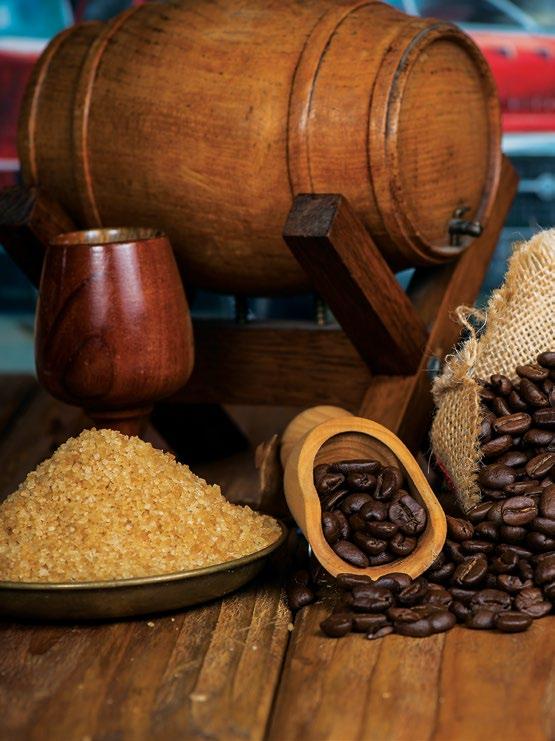
In what areas are these activities mostly devel oped?
They are mostly located in the agricultural sec tor. Exporting is a complex activity, and to do so from this sector it is necessary to comply with re quirements such as certification of the land, and with plant health regulations that protect produc tion, so that exports comply with the food safety standards that are essential to allow their products access to other markets. Some of them are very de manding, such as those of the European Union and Canada.
At what stage are the alliances of enterprises and productive centers with non-state actors and their possibility of participating in foreign trade?
For example, the Ceballos Agro-industrial En terprise, in Ciego de Ávila, is a productive export center dedicated mainly to harvested and processed fruits, and it is associated with an important group of non-state forms of management such as farmers and cooperatives from the province or nearby ter
ritories. These are contributing with their pro ductions to sustain export markets and, at the same time, they are benefiting. The creation and consolidation of the Exporting Productive Cen ters constitutes a focal point in the attention to the territories.
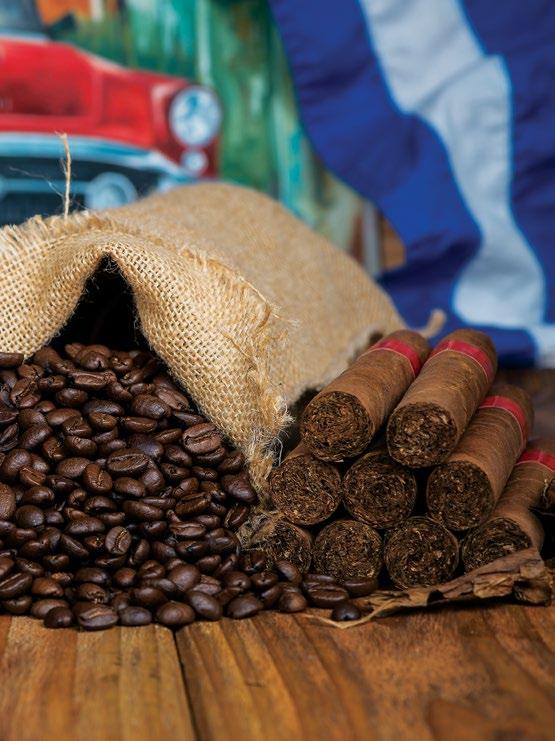
What other steps are being taken to expand the range of exports?
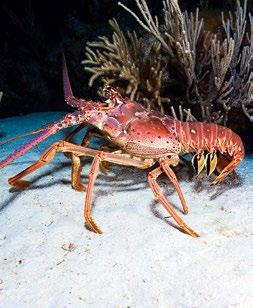
We are also working on the certification of our exportable products in new markets, as well as on expanding the certification of new prod ucts in markets where we were already present, as is the case of China. Our lobster was certified there, but we can now sell them 14 fish products.
We are constantly working to diversify our productions and access to new markets.
A review is also being carried out of the par tial scope agreements and the economic comple mentation agreements established with coun tries in the region to strengthen our bilateral re lations.
—Mayoritariamente, se ubican en el sec tor agrícola. La exportación es una actividad compleja, y para hacerlo desde este sector hay que cumplir con requisitos como la cer tificación de la tierra, y con regulaciones fito sanitarias que protejan la producción, de mo do que las exportaciones cumplan con los es tándares de inocuidad alimentaria indispen sables para que se permita el acceso de esos productos a otros mercados. Algunos de ellos son muy exigentes, como los de la Unión Eu ropea y Canadá.
—¿Cómo marchan las alianzas de empresas y polos productivos con actores no estatales y su posibilidad de participar en el comercio ex terior?
—Por ejemplo, la Empresa Agroindustrial de Ceballos, en Ciego de Ávila, es un polo productivo exportador dedicado, principal mente, a los frutos cosechados y procesa dos, y tiene asociados un grupo importante de formas de gestión no estatal como cam pesinos y cooperativas de la propia provincia o territorios cercanos. Estos están contribu yendo con sus producciones a sostener mer cados de exportación y, al propio tiempo, se están beneficiando. La creación y consolida ción de los Polos Productivos Exportadores constituye un eje central en la atención a los territorios.


—¿Qué otros pasos se dan para ampliar el abanico de exportaciones?
—Estamos trabajando también en la cer tificación de nuestros productos exportables en nuevos mercados, así como en la amplia ción de la certificación de nuevos productos en mercados donde ya estábamos, como es el caso de China. Allí estaba certificada nues tra langosta pero ya podemos venderles más de una docena de productos pesqueros. No nos detenemos en los trabajos para diversifi car nuestras producciones y el acceso, en ge neral, a nuevos mercados.
«También se comienza una revisión de los acuerdos de alcance parcial y de los acuer dos de complementación económicos esta blecidos con países de la región para reforzar nuestras relaciones bilaterales.
FOTO/PHOTO: © ROSTISLAV AGEEV / 123RF Full version of the interview here.La sociedad mercantil FERROMAR S.A., usuario de la Zona Especial de Desarro llo Mariel (ZEDM), a un año de su cons titución, se ha consolidado y certifica do como la principal transportista de conte nedores de Cuba. Cuenta con Licencia para la operación multimodal (ferroviario-automo tor), permitiendo la transportación de conte nedores desde y hacia la ZEDM, actuando en nombre propio como operador y responsabi lizándose con las cargas desde su origen has ta su destino.
En la actualidad incorporan los tráficos del oriente del país, garantizando las cargas de contenedores desde el puerto de Santiago de Cuba por vía ferroviaria.
FERROMAR S.A., asume también la trans portación de contenedores refrigerados con una alta seguridad en su operación; y de ma nera general disminuye los ciclos de entre ga de contenedores pactados con los clien tes, reconocimiento que estos muestran por la calidad en el servicio prestado.
El principal reto de FERROMAR S.A. será, en un mediano plazo, constituir alianzas es tratégicas para la atracción de la inversión extranjera que permita la renovación de sus tecnologías del material rodante, fundamen talmente locomotoras y coches de pasajeros para poder rediseñar las transportaciones de pasajeros entre la capital del país y la ZEDM, objetivo primordial y de un alto impacto so cial en las comunidades enclavadas en Línea Mariel.
The FERROMAR S.A. trading company, user of the Mariel Special Development Zone (ZEDM), has been consolidated and certified as the main contain er carrier in Cuba at one year after its constitution. It has a license for multimodal operation (railway-au tomotive), allowing the transportation of contain ers to and from the ZEDM, acting in its own name as operator and taking responsibility for the loads from their origin to their destination.
At present, we incorporate traffic from the east of the country, guaranteeing container loads from the port of Santiago de Cuba by rail.



FERROMAR S.A. also assumes the transporta tion of refrigerated containers with high safety in its operation; and in a general way it reduces the de livery cycles of containers agreed with the clients, a recognition that it displays for the quality of the service provided.
The main challenge for FERROMAR S.A. will be, in the medium term, to establish strategic alli ances to attract foreign investment for the renewal of its rolling stock technologies, fundamentally lo comotives and passenger cars, in order to redesign passenger transportation between the capital of the country and the ZEDM, a primary objective and of a high social impact in the communities located in the Mariel Line.

La 38 edición de la Feria Internacional de La Habana, FIHAV 2022, se reafirma nuevamente como una importante cita en tre el empresariado extranjero y nacional. De regreso, tras dos años suspendida debido a la pandemia de la covid-19, la feria reúne en esta ocasión a expositores y profesionales de una veintena de países y representantes de todos los actores y secto res de la economía en la isla caribeña.
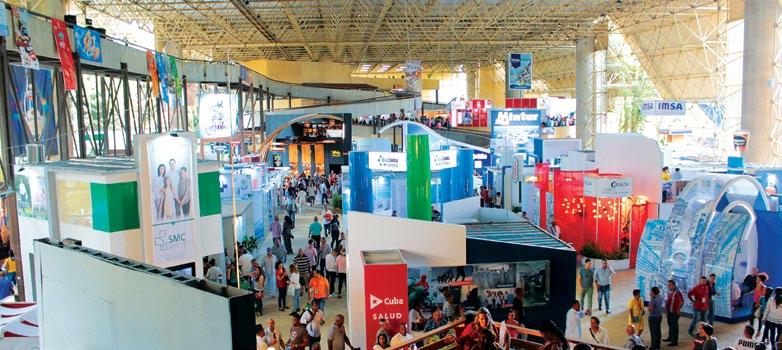
El evento acoge también el V Foro de Inversiones, una plataforma de encuentros bilaterales entre empresarios cubanos e internaciona les que permitirá compartir ideas y abordar desafíos relacionados con la inversión en la Mayor de las Antillas.
Entre las atracciones de FIHAV 2022 destacan además la presenta ción del Portal de Inteligencia Empresarial y de los fondos exporta bles cubanos, así como el desarrollo de un foro empresarial con cuba nos residentes en el exterior.
Desde su primera edición en 1983, la cita se ha convertido en la bolsa comercial de carácter general más importante de Cuba y el Ca ribe, y una de las más representativas en América Latina; una platafor ma de negocios para empresas nuevas en el mercado cubano y pa ra aquellas ya establecidas, cuya magnitud e importancia radican en la oportunidad de ofrecer la más completa muestra comercial nacio nal.
THE 38th EDITION of the Havana International Trade Fair, FIHAV 2022, reaffirms itself once again as an important meeting between for eign and national businesspeople. Back after two years suspended due to the Covid-19 pandemic, the fair brings together exhibitors and profes sionals from 20 countries and representatives of all the actors and sectors of the economy on the Caribbean island.
The event also hosts the 5th Investment Forum, a platform for bilat eral meetings between Cuban and international businesspeople that will allow them to share ideas and address challenges related to investment on the island.
Also among the attractions of FIHAV 2022 are especially the presen tation of the Business Intelligence Portal and Cuban Exportable Funds, as well as the development of a business forum with Cubans residing abroad.
Since its first edition in 1983, the event has become the most import ant general trade exchange in Cuba and the Caribbean, and one of the most representative in Latin America; a business platform for new com panies in the Cuban market and for those already established, whose magnitude and importance lie in the opportunity to offer the most com plete national commercial sample.
MONTARDI CONSTRUCCIONES, como ac tor económico en Cuba, es también pro ductor-vendedor de materiales afines. Bajo la sombrilla de la empresa italiana IBC Resigum International SRL, MONTARDI CONSTRUCCIONES realizó trabajos en insta laciones de la Oficina del Historiador de la Ciudad de La Habana, los Ministerios de Cul tura y de Comercio Exterior; y para los sec tores de la Educación, la Salud y el Turismo.
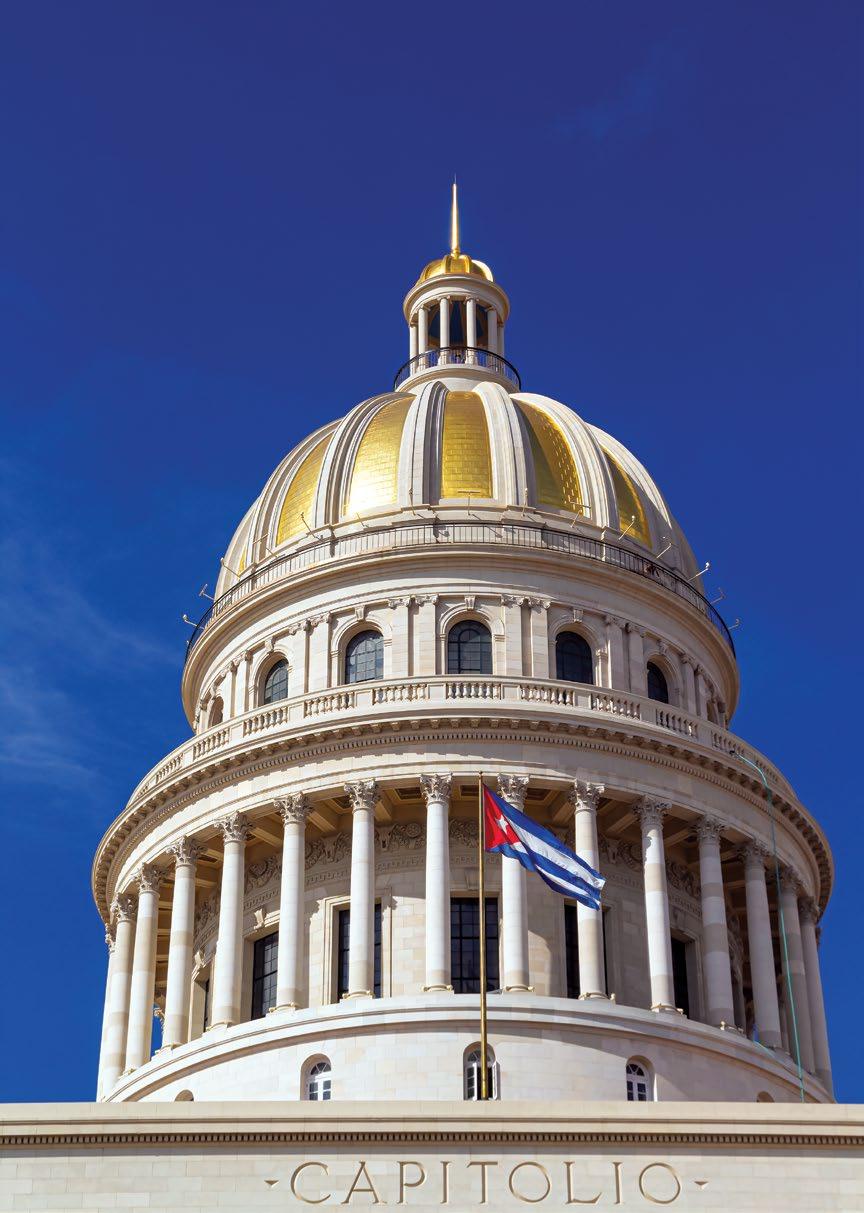

CON
MONTARDI CONSTRUCCIONES trabaja en asociación con Winkler Panamericana (www.winklerpanamericana.com), em presa productora y distribuidora de productos tecnológicamente avan zados e innovadores de construc ción en su más amplio sentido, los cuales son aplicados en Cu ba por MONTARDI CONSTRUC
CIONES: ĥ Resinas epóxicas
Pinturas
Morteros
Productos para piscinas
Productos para impermeabilizar cubiertas ĥ Productos para canchas de tenis Con MONTARDI CONSTRUCCIONES, sus obras están garantizadas. Contáctenos: +53 53705891
CONSTRUCCIONES, as an economic actor in Cuba, is also a producer-seller of finished materials. Under the umbrella of the Italian company IBC Resigum International SRL, MONTARDI CONSTRUCCIONES carried out work in the facilities of the Office of the City of Havana Historian, the Ministries of Culture and of Foreign Trade; and for the education, health and tourism sectors.
La innovación va de la mano de la aplicación del conocimiento y de la ciencia; resulta de ellas. Para Cuba, forma parte de una política que adquiere mayor dimensión tratándose de una nación pobre y bloqueada.
Hace poco más de un año, la constitución del Consejo Nacional de Innovación (CNI) fue otro paso en la materialización de lo que se ha asumido como un sistema de gestión del gobierno: la gestión gubernamental basada en ciencia e innovación como pilar de la estrategia económica y social cubana, para encontrar solución a los retos y desafíos que enfrenta la nación y asegurar el desarrollo sostenible. Así lo enunció el propio Presidente Miguel DíazCanel, artífice y promotor de esta política.
Los exitosos resultados del enfrentamiento de Cuba a la Covid-19, jalonados por los esfuerzos que unieron al conocimiento científico y el sistema nacional de salud, a convocatoria del Jefe de Estado, constituyeron una de las simientes de esa estrategia.
Desde entonces son regulares y frecuentes los encuentros del presidente cubano con los científicos y profesionales de la salud para analizar cómo marcha no solo ya el enfrentamiento a la pandemia sino, además, otros asuntos que tienen que ver con la salud de la población. A ello se han sumado reuniones habituales con los más diversos sectores de la vida social y económica del país y los miembros de la Academia de Ciencias de Cuba, empleo de expertos para el avance de las políticas públicas, además de reuniones mensuales con el CNI propiamente.
El Consejo Nacional de Innovación se constituyó en mayo de 2021 como parte de la cristalización de los esfuerzos liderados por DíazCanel y científicos de la Isla para que los procesos de ciencia e innovación en el país sean más intersectoriales, interinstitucionales e interdisciplinarios.
«El CNI es un órgano asesor del Presidente de la República para encaminar el uso del
conocimiento con vista a la solución de los problemas fundamentales del país, basados en la innovación», explica puntualmente, en entrevista con TTC, la Doctora en Ciencias Técnicas Aurora Fernández González, asesora del Ministro de Educación Superior y miembro del equipo ejecutivo del CNI.
Unos pocos países en el mundo, entre ellos Suecia, poseen Consejo Nacional de Innovación. «Estudiamos mucho la experiencia sueca, narra, y nos dimos cuenta que aquí podía ser útil un órgano asesor de ese tipo».
Veinticuatro personas integran el CNI, incluido el presidente Díaz-Canel (que es Doctor en Ciencias Técnicas y lo encabeza), su primer ministro y un vice primer ministro (la Máster en Ciencias y actualmente doctorante Inés María Chapman Waugh), junto a nueve titulares de carteras consideradas como «más innovadoras»; cinco académicos con experiencia y cinco empresarios exitosos.
El Consejo Nacional de Innovación cubano es una plataforma de discusión e intercambio de ideas y perspectivas entre especialistas del sector de la producción y los servicios, las universidades, las entidades de ciencia, tecnología e innovación y el gobierno.
Allí se genera un diálogo entre iguales alrededor de temas clave para el país.

INTERVIEW WITH DR. AURORA FERNÁNDEZ GONZÁLEZ, MEMBER OF THE EXECUTIVE TEAM OF THE NATIONAL INNOVATION COUNCIL INNOVATION goes hand in hand with the application of knowledge and science; it is a result of them. For Cuba, it is part of a policy that acquires a greater dimension given that it is a poor and blockaded nation.
Just over a year ago, the constitution of the National Innovation Council (CNI) was another step in the materialization of what has been assumed as a government management system: government management based on science and innovation as a pillar of the Cuban economic and social strategy, to find solutions to the challenges facing the nation and ensure sustainable development. This was stated by President Miguel Díaz-Canel himself, the architect and promoter of this policy.
The successful results of Cuba’s confrontation with COVID-19, marked by the efforts that united scientific knowledge and the national health system, at the call of the Head of State, constituted one of the seeds of that strategy.
Since then, the President has held regular and frequent meetings with scientists and health professionals to analyze not only how the fight against
the pandemic is progressing, but also other issues that have to do with the health of the population. To this have been added regular meetings with the most diverse sectors of the country’s social and economic life and members of the Cuban Academy of Sciences, employment of experts for the advancement of public policies, as well as monthly meetings with the CNI itself.
The National Innovation Council was established in May 2021 as part of the crystallization of the efforts led by Díaz-Canel and Cuban scientists to make the science and innovation processes in the country more intersectoral, interinstitutional, and interdisciplinary.
“The CNI is an advisory body to the President of the Republic to direct the use of knowledge with a view to solving the fundamental problems of the country, based on innovation,” Doctor of Technical Sciences Aurora Fernández González, advisor to the Minister of Higher Education and member of the executive team of the CNI, explained in an interview with TTC.
A few countries in the world, including Sweden, have a National Innovation Council. “We studied the Swedish experience a lot,” she says, “and we realized that an advisory body of this type could be useful here.”
The CNI is made up by 24 people, including President Díaz-Canel (who is a Doctor of Technical Sciences and heads it), the prime minister and a deputy prime minister (Master of Science and currently
ENTREVISTA A LA DRA.C. AURORA FERNÁNDEZ GONZÁLEZ, ASESORA DEL MINISTRO DE EDUCACIÓN SUPERIOR DEL PAÍS Y MIEMBRO DEL EQUIPO EJECUTIVO DEL CONSEJO NACIONAL DE INNOVACIÓN.a doctoral candidate Inés María Chapman Waugh), along with nine holders of portfolios considered as “most innovative”; five experienced academicians and five successful entrepreneurs.
The Cuban National Innovation Council is a platform for discussion and exchange of ideas and perspectives between specialists in the production and services sector, universities, science, technology and innovation entities and the government. There, a dialogue between equals is generated around key issues for the country.
The executive team of the Council analyzes in advance the topics that will be proposed for debate. “We try to invite knowledgeable people who come up with new ideas. They do not always have the same points of view,” she said.
There is a previous search for the sources that can provide that knowledge, the contrast and debate of ideas.
Among the guests, for example, was the secretary of the Swedish Innovation Council, Sylvia Schwaag Serger, last February. “It was a very rewarding experience.”
“Such important issues as renewable energy sources (RES) have been discussed in the Council. Most of our electricity, more than 90 percent, is generated by thermoelectric plants, which use fossil fuels; also very old, and whose maintenance is very expensive,” she pointed out.

“The country aims to try to increase RES, and that at some point
they become the largest source of generation…. Work is being done so that by 2030 a good part of the electricity comes from RES.”
There has also been a debate about the digital transformation, which is a higher stage, an improvement of the computerization policy of society in the country. “It was approved to prepare a country program for digital transformation in Cuba and the Digital Agenda for 2030.”
“In each of the issues that the CNI analyzes, the President has indicated that proposals be brought on matters that will have a favorable impact on the life of the common citizen.
“We think that the CNI can be like a transmission pulley to search for and generalize experiences.”
Could we say that science, innovation and knowledge constitute the triad that is governing government work in Cuba today?
“Yes. Knowledge ranges from high science to a farmer’s knowledge…general knowledge. Science ranges from high science to all that great realm. Science and innovation: because advances in knowledge, if you do not apply them, do not become innovation.
“This system of government is also based on the fact that Cuba has human talent, it has a very prepared people, with knowledge, which on many occasions is not used as much as it should be,” she assessed.
El equipo ejecutivo del Consejo analiza a priori los temas que se propondrán a debate. «Tratamos de invitar a personas conocedoras y que presenten ideas novedosas. No siempre tienen los mismos puntos de vista», detalla. Hay una búsqueda previa de las fuentes que pueden proveer ese conocimiento, el contraste y debate de ideas. Entre los invitados, por ejemplo, estuvo en febrero pasado la secretaria del Consejo de Innovación de Suecia, Sylvia Schwaag Serger. «Fue una experiencia muy provechosa».
«En el Consejo se han discutido asuntos tan importantes como las fuentes renovables de energía (FRE). La mayor parte de nuestra electricidad, más del 90 por ciento, se genera por termoeléctricas, que emplean combustibles fósiles; por demás, muy viejas, y cuyo mantenimiento cuesta muy caro», apunta.
«El propósito del país es tratar de ir incrementando las fuentes renovables de energía (FRE), y que en algún momento lleguen a constituir la mayor fuente de generación… Se está trabajando de modo que para 2030, buena parte de la electricidad provenga de las FRE».
También se ha debatido acerca de la transformación digital, que es una etapa superior, un perfeccionamiento
de la política de informatización de la sociedad en el país. «Se aprobó elaborar un programapaís para la transformación digital en Cuba y la Agenda Digital para el 2030».
«En cada uno de los temas que el CNI analiza, el Presidente ha indicado que se lleven propuestas de asuntos que van a impactar favorablemente en la vida de la población, en el ciudadano común. Nosotros pensamos que el CNI puede ser como una polea de transmisión para buscar y generalizar experiencias».

—¿Pudiéramos decir que ciencia, innovación y conocimiento, constituyen la triada que está rigiendo hoy la gestión gubernamental en Cuba?
—Sí. El conocimiento incluye desde la alta ciencia hasta el conocimiento de un campesino… el conocimiento amplio. La ciencia va desde la alta ciencia hasta todo ese gran ámbito. Ciencia e innovación: porque los avances del conocimiento, si no los aplicas, no se convierten en innovación.
«Este sistema de gobierno se basa también en que Cuba tiene talento humano, tiene un pueblo muy preparado, con conocimiento, que en no pocas ocasiones no se utiliza todo lo que debe ser. El conocimiento, la ciencia, la tecnología y la innovación constituyen insumos imprescindibles para avanzar en el proceso de desarrollo, a todos los niveles», valora.
El Museo del Ron Havana Club de Cuba resultó ganador del Premio de Elección de Expertos (Experts’ Choice Award), que reconoce a las empresas y entidades calificadas constantemente como sobresalientes, según informaron directivos de la propia entidad.
El premio 2022 Experts’ Choice Award es el único galardón de su tipo basado en múltiples fuentes de reseñas
profesionales, como guías de viaje, revistas y periódicos. El reconocimiento distingue a la instalación como uno de los sitios de mayor satisfacción en La Habana, y lo ubica entre los pilares de los mejores lugares a visitar en el planeta.
El museo se mantiene como uno de los sitios más visitados y recibe público de agencias de viajes y turismo individual. Como novedad, la institución ha incorporado la cata de nuevos
productos de innovación de la marca Havana Club, Profundo y Smokie, así como el inicio de un curso de nuevas tendencias de la coctelería internacional junto a los principales colaboradores de la Asociación de Cantineros de Cuba (ACC).
Más recientemente, el Museo del Ron Havana Club ha sido nominado a los World Travel Awards en la categoría de World’s Leading Rum Distillery Tour 2022.



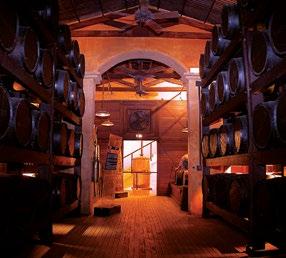
THE HAVANA CLUB Rum Museum of Cuba was the winner of the Experts’ Choice Award, which recognizes companies and entities consistently rated as outstanding, according to officials of the entity itself.
The recognition distinguishes the facility as one of the most satisfying sites in Havana, and places it among the pillars of the best places to visit on the planet.
The museum remains one of the most visited sites in this city and receives visitors from travel agencies and individual tourism. As a novelty, the institution has incorporated the tasting of new innovation products of the Havana Club, Profundo and Smokie brands, as well as the start of a course on new trends in international cocktails together with the main collaborators of the Cuban Bartenders Association (ACC).
The 2022 Experts’ Choice Award is the only accolade of its kind based on multiple sources of professional reviews, such as travel guides, magazines and newspapers.
El Havana Club Don Navarro es una creación única que rinde homenaje al Primer Maestro del Ron Cu bano José Pablo Navarro Campa, quien recibiera el referido título en el año 2000.
Con una producción anual de solo 1000 botellas, Hava na Club Don Navarro es resultado de la mezcla de bases de rones muy especiales, sabiamente cuidadas y enrique cidas por muchos años en el occidente de Cuba, y que, en palabras de otro Maestro del Ron Cubano, Asbel Morales, «está tocado por el Maestro Navarro», pues una de sus ba ses fue creada por él, lo que dio paso al nacimiento de ro nes de calidad superior, conocidos posteriormente como los extrañejos.

Un ron de color y perfil sensorial únicos, suave, muy elegante y al mismo tiempo, fuerte y ferviente como era Navarro.

Empresa ImportadoraExportadora con 28 años de experiencia en el Comercio Exterior, con su Sistema de Gestión de la Calidad certificado por la Norma ISO 9001:2015. Cítricos Caribe S.A. importa insumos y suministros para el aseguramiento de las producciones, y exporta productos agrícolas de empresas del sistema de la agricultura y de las Formas de Gestión No Estatal.
Asimismo, comercializa frutas y vegetales frescos: aguacate, mango, ají picante variedad Chile Habanero, cúrcuma y jengibre.
The Havana Club Don Navarro is a unique creation that pays tribute to the First Cu ban Rum Master, José Pablo Navarro Campa, who received the aforementioned title in 2000.
With an annual production of only 1,000 bottles, Havana Club Don Navarro is the result of mixing very special rum bases, wisely cared for and enriched for many years in western Cuba, and which, in the words of another Cuban Rum Master, Asbel Mo rales, “is touched by Master Navarro,” since one of its bases was created by him, which gave way to the birth of superior quality rums, later known as “extrañejos.”
A rum with a unique color and sensory profile, smooth, very elegant and at the same time, strong and fervent like Navarro.

El aloe vera, el boniato, los arándanos, y los productos deshidratados (gominas de plátano manzano, piña, coco, tomate), entre otros, son nuevas líneas exportables por los que apuesta la empresa para continuar satisfaciendo las expectativas del mercado.
El carbón vegetal de marabú Bucán, se comercializa en diversos formatos desde 3 a 20 kg, tanto para uso doméstico como industrial, y goza de gran prestigio por su dureza y aroma.
Cítricos Caribe S.A. is an importexport company with 28 years of experience in foreign trade, with its Quality Management System certified by ISO 9001:2015; whose corporate purpose is the import of inputs and supplies to guarantee productions; as well as the export of agricultural products, both from the agriculture system and from non-state forms of management. To carry out its work it has a group of highly qualified specialists.

The commercial relationship is established fundamentally with the European destination in the lines of fresh fruits and vegetables such as:

avocado, mango, hot pepper in the Habanero Chile variety, turmeric and ginger.
Aloe vera, sweet potatoes, blueberries and dehydrated products such as banana, pineapple, coconut, tomato gummies, among others, are new export lines that Cítricos Caribe S.A. is betting on to continue meeting market expectations.
Another widely accepted product is the Bucán marabú charcoal, which is marketed in various formats from 3 to 20 kg, both for domestic and industrial use, which enjoys great prestige for its hardness and aroma.
Autoridades del turismo en Varadero prevén un crecimiento en la afluen cia de visitantes al principal destino turístico de sol y playa de Cuba, en correspondencia con lo acontecido en meses recientes.
De acuerdo con Ivis Fernández, delega da del Ministerio de Turismo en el balneario, en el último trimestre del 2022, en el contex to de la llamada temporada alta, el polo turís tico cubano podría reportar registros favora bles de visitantes. De hecho, actualmente re cibe el 36 por ciento de los turistas interna cionales que llegan a la Mayor de las Antillas.
Fernández precisó que la realización de varios eventos de carácter internacional co mo la 69 edición del Campeonato Mundial de Coctelería de la Asociación Internacional de Bartenders, así como la primera edición de la lid de aguas abiertas de natación, bajo el aus picio de la empresa mexicana Gran Retto, po sibilitó al mundialmente conocido destino la recepción de cifras considerables de visitan tes foráneos.
Más de 21 mil 880 habitaciones, distribui das en 56 hoteles con prestigiosos operado res hoteleros como Meliá, Iberostar, Roc, Blue Diamond, BeLive, Barceló, Valentín y Muthu, componen la planta de alojamiento en Vara dero.
TOURISM authorities in Varadero foresee a growth in the influx of visitors to the main sun and beach tourist destination in Cuba, in cor respondence with what has happened in recent months.
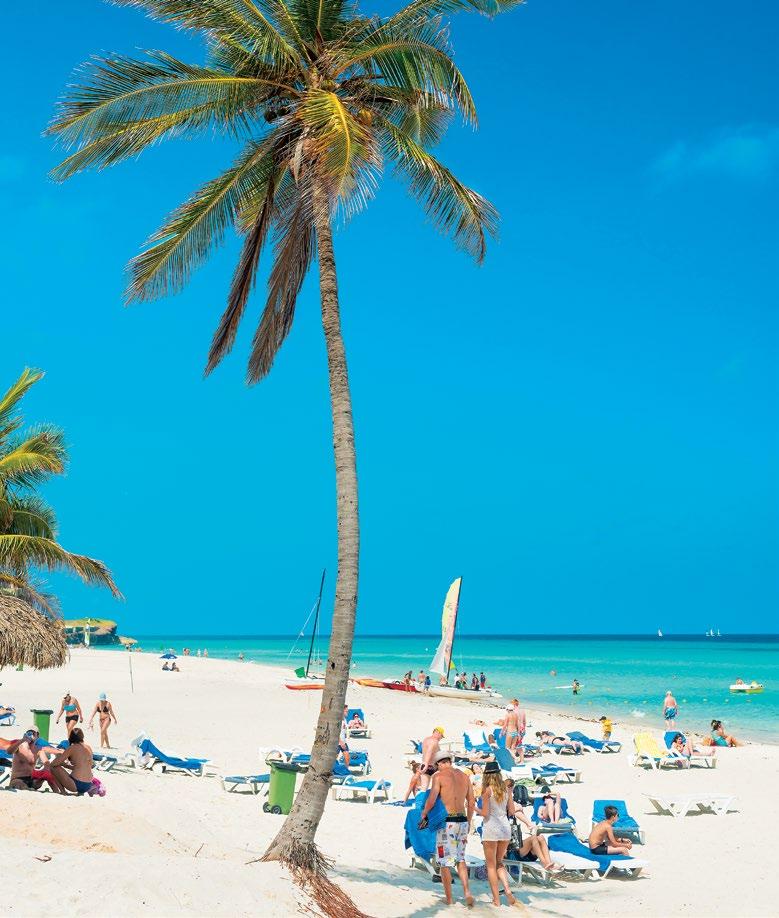
According to Ivis Fernández, delegate of the Ministry of Tourism in the resort, in the last
quarter of 2022, in the context of the so-called peak season, the Cuban tourist destination could report favorable visitor records. In fact, it currently re ceives 36 percent of the international tourists who arrive in the country.
Fernández specified that the holding of several in ternational events such as the International Bartend ers Association’s 69th edition of the World Cocktail Championship, as well as the first edition of the open
water swimming competition, under the auspic es of the Mexican company Gran Retto, made it possible for the world-renowned destination to receive a considerable number of foreign visitors.
More than 21,880 rooms, distributed in 56 hotels with prestigious hotel operators such as Meliá, Iberostar, Roc, Blue Diamond, BeLive, Barceló, Valentín and Muthu, make up the ac commodation plant in Varadero.

En América Latina, donde existen al menos dos mil kilómetros de ciclovías, en los últimos años grandes urbes como Bogotá, Santiago de Chile o Ciudad de México han logrado promover el ciclismo urbano e incrementar el número de personas que usan la bicicleta para trasladarse.
Precisamente extender esta práctica y promover un cambio de paradigma hacia la movilidad urbana sostenible y el transporte de bajas emisiones de carbono es uno de los objetivos fundamentales del proyecto internacional Neomovilidad, financiado por el Fondo Mundial para el Medio Ambiente y ejecutado por el Programa de las Naciones Unidas para el Desarrollo (PNUD).
IN LATIN AMERICA, where there are at least 2,000 kilometers of bicycle lanes, in recent years large cities such as Bogotá, Santiago de Chile or Mexico City have managed to promote urban cycling and increase the number of people who use bicycles to get around.
One of the fundamental objectives of the international project Neomobility, financed by the Global Fund for the Environment and carried out by the United Nations Development Program (UNDP), is precisely extending this practice and promoting a paradigm shift towards sustainable urban mobility and transportation with lowcarbon emissions.
According to statements made to TTC by Reinier Campos Pompa, head of
De acuerdo con declaraciones a TTC de Reinier Campos Pompa, jefe de Desarrollo de la Dirección General de Transporte Provincial La Habana (DGTPH), una de las metas de Neomovilidad es lograr que antes de fines de este año, la capital cubana cuente con un sistema de bicicletas públicas a nivel piloto.
El programa prevé seis cicloestaciones y se concibió para fomentar el uso de ese medio de transporte bajo en carbono por motivos de trabajo y estudio, principalmente. Según Campos Pompa, actualmente se realizan las últimas acciones constructivas en la obra civil de la estación central en la Universidad Tecnológica José Antonio Echeverría, con el objetivo de comenzar la implementación del proyecto con 300 bicicletas.
Desde 2021 se preparó la gestión del programa piloto, el cual tendrá a Inteliforja como operador, luego de ganar una licitación en la que se presentaron empresas cubanas estatales y formas de gestión no estatal relacionadas con ese medio de transporte.

El programa prevé seis cicloestaciones y se concibió para fomentar el uso por motivos de trabajo y estudio.

Development of the General Directorate of Provincial Transportation in Havana, one of the goals of Neomobility is to ensure that the Cuban capital has a system of public bicycles at a pilot level before the end of this year.

The program provides for six cycle stations and was conceived to promote the use of this low carbon means of transportation mainly for work and study reasons. According to Campos Pompa, the last construction actions are currently being carried out in the civil works of the central station at the José Antonio Echeverría Technological University (CUJAE), with the aim of beginning the implementation of the project with 300 bicycles.
Since 2021, the management of the pilot program has been prepared, which will have Inteliforja as operator, after winning a tender among Cuban state companies and forms of nonstate management related to this means of transportation.
The official specified that two cycle stations will be in the Reloj Club area, and another four will be located in the Fontanar-Abel SantamaríaWajay corridor, in the Boyeros municipality.
Regarding the characteristics of the bicycles, Reinier Campos Pompa pointed out that they are mechanical and were assembled at the Narciso López Roselló company, with a special design and planned maintenance.
“Together with the CUJAE we designed other complementary services for the university community such as bicycle and motorcycle parking, mechanical workshops, and specific bicycle rentals,” said the official.
“The idea is that these means remain as short as possible in the central station and can solve specific transportation problems for teachers and students, to facilitate the transfer to their homes in the evening,” he added.
El directivo precisó que dos cicloestaciones estarán en la zona de Reloj Club, y otras cuatro se dispondrán en el corredor FontanarAbel Santamaría-Wajay, en el municipio Boyeros.
Acerca de las características de las bicicletas, Reinier Campos Pompa apuntó que son mecánicas y
fueron ensambladas en la empresa Narciso López Roselló, con diseño especial y tratamiento planificado de mantenimiento.
Con la Cujae diseñamos otros servicios complementarios para la comunidad universitaria como parqueo de bicicletas y motos, talleres mecánicos, y alquiler
específico de bicicletas, señaló el directivo.
«La idea es que esos medios permanezcan el menor tiempo posible en la estación central y puedan resolver los problemas puntuales de transportación con el arrendamiento a profesores y estudiantes, para facilitarles el traslado hacia sus casas en el horario nocturno», agregó.
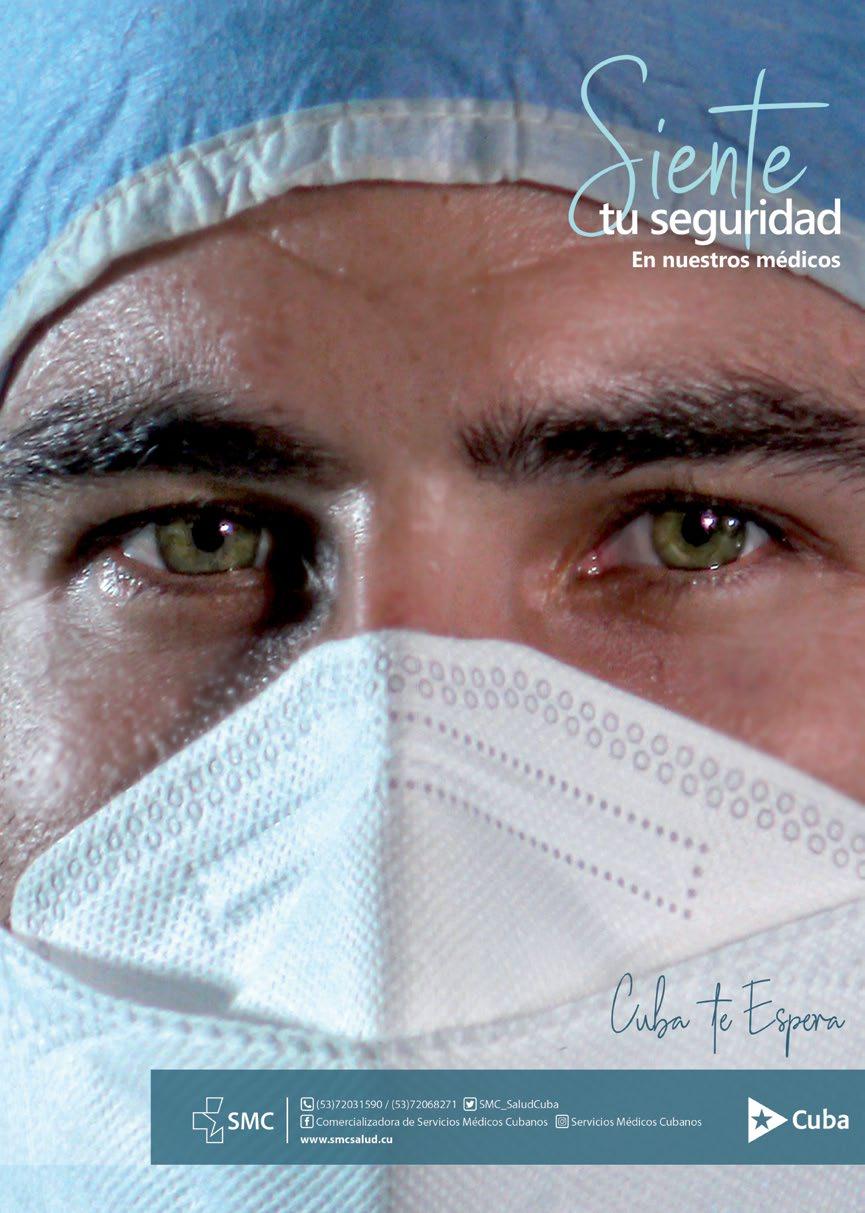
Más que una tendencia de moda en la industria de los viajes, la hotelería, la gastronomía, y la coctelería, la sostenibilidad se ha convertido en la única alternativa que tenemos los que habitamos hoy el planeta y deseamos no arruinar el futuro de las generaciones venideras. Garantizar el equilibrio entre rentabilidad, el cuidado del medio ambiente y el bienestar social es uno de los mayores retos que tiene por delante la sociedad actual; sin embargo, el camino más largo comienza siempre con un primer paso.
¿Puede un bar en Cuba ser eco-friendly y sostenible? ¿Cómo llevar la sostenibilidad a la barra en el contexto cubano? Sobre estas y otras cuestiones, Travel Trade Caribbean conversó con el bartender Daniel García, quien es uno de los cantineros del país que ha adoptado la filosofía de desperdicio mínimo y máximo aprovechamiento de cada ingrediente.
Comprometido con la idea de reducir la mayor cantidad de residuos posible, Daniel ha incorporado a su rutina habitual la costumbre de agotar todas las posibilidades con un ingrediente antes de tirarlo.
«Estas prácticas sostenibles no solamente ayudan al medio ambiente, que es el principal objetivo, sino que también contribuyen a la rentabilidad del bar, pues reduce los costos de muchos cocteles; y con este concepto fuimos armando nuestro set con productos cubanos a utilizar y reutilizar, para mostrarle a otros cantineros del país cómo elaborar estas preparaciones de aprovechamiento», comentó.
Junto a sus colegas, este joven bartender ha implementado lo que llaman «seguimiento de un producto». «Por ejemplo, el
limón, una vez exprimido, lo ponemos en una cestica y al final del día lo mezclamos con azúcar para hacer un sirope en caliente. Pero incluso esas cáscaras se pueden seguir reutilizando, pues ya están confitadas por el sabor del sirope, y muchas veces las deshidratamos en hornos o al sol, y eso nos sirve luego en láminas finas como una especie de condimento, y también para decorar cocteles», explicó.
Otro producto que abogan por un mejor aprovechamiento de sus residuos es el café. «Para no desperdiciar ese desecho proponemos que, después de hacer el expreso, se puede alargar su vida útil elaborando un licor: unimos la borra de café con agua y azúcar y lo destilamos, le damos un hervor y dejamos refrescar a manera de infusión; luego lo filtramos y le añadimos ron oscuro y corteza de naranja, para darle un toque cítrico», detalló.
Una bebida como esta —aclara el joven cantinero— tendrá además un costo cero casi, porque el costo del café ya lo asumió con anterioridad el expreso. «Con estos ejemplos lo que buscamos es compartir nuestra idea de que con el residuo del café hay que hacer algo», remarcó.
ĥ La reducción del desperdicio ahorra costos y obliga al personal a ser creativo
ĥ Involucrar a tu equipo en la ética y pasión por la sostenibilidad ayudará a obtener nuevas ideas en ese camino
ĥ Conectarte con colegas que practiquen esfuerzos sostenibles puede generar aprendizajes clave en materia de sostenibilidad.
More than a fashion trend in the travel, hotel, gastronomy, and cocktail industries, sustainability has become the only alternative that those of us who inhabit the planet today have and wish not to ruin the future of coming generations. Guaranteeing the balance between profitability, care for the environment and social welfare is one of the greatest challenges facing today’s society; however, the longest road always begins with a first step.
Can a bar in Cuba be ecofriendly and sustainable? How to bring sustainability to the bar in the Cuban context? On these and other issues, Travel Trade Caribbean spoke with bartender Daniel García, who is one of the country’s bartenders who has adopted the philosophy of minimum waste and maximum use of each ingredient.
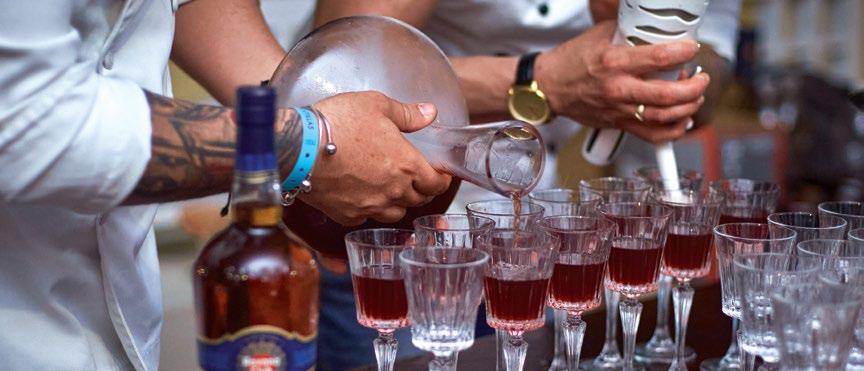
Committed to the idea of reducing as much waste as possible, Daniel has incorporated into his regular routine the habit of exhausting all possibilities with an ingredient before throwing it away.
“These sustainable practices not only help the environment, which is the main objective, but also contribute to the profitability of the bar, since it reduces the costs of many cocktails; and with this concept we started putting together our set with Cuban products to use and reuse, to show other bartenders in the country how to make these preparations for use,” he commented.
Together with his colleagues, this young bartender has
implemented what they call “product tracking.” “For example, once squeezed, we put the lemon in a basket and at the end of the day we mix it with sugar to make a hot syrup. But even those used lemons can continue to be reused, since they are already candied by the flavor of the syrup, and many times we dehydrate them in ovens or in the sun, and that is then used in thin slices as a kind of condiment, and also to decorate cocktails,” he explained.
Another product they advocate for a better use of its waste is coffee. “In order not to throw away this waste, we propose that, after making the espresso, its useful life can be extended by making a liqueur: we combine the coffee grounds with water and sugar and distill it, bring it to a boil and let it cool as an infusion; then we filter it and add dark rum and orange rind, to give it a citrus touch,” he detailed.
A drink like this, the young bartender specifies, will also have almost zero cost, because the cost of the coffee was previously assumed by the espresso. “With these examples, what we seek is to share our idea that something must be done with coffee residue,” he underlined.
ĥ Reducing waste saves costs and forces staff to be creative
ĥ Engaging your team in ethics and passion for sustainability will help get new ideas on that path
ĥ Connecting with colleagues practicing sustainable efforts can lead to key learnings on sustainability.


Enfocada en los servicios extrahotele ros, la Empresa Palmares S.A, participa en la Feria Internacional de La Haba na, FIHAV 2022. Esta entidad brinda al turismo nacional e internacional numerosas ofertas recreativas y gastronómicas median te las cuales pone al alcance de sus clientes la cultura y la naturaleza de Cuba.
Entre sus líneas de negocio destacan la restauración, recreación, centros nocturnos, turismo ecológico y deportivo; así como la gastronomía ligera. Recientemente Palmares se encuentra dirigida hacia la defensa de la gastronomía sostenible, de ahí la reinaugura ción en julio de este año del Restaurante Fabio, situado en el Vedado habanero y considerado el primer restaurante sostenible de dicha en tidad.
La empresa también trabaja la modalidad de franquicias, y posee contratos en varios países del mundo, donde se puede disfrutar de lo mejor de la cocina, la coctelería, el baile, la música y el ambiente cubano, bajo la garan tía de marcas reconocidas y con alto presti gio internacional por su servicio, su propues ta cultural y su singular ambiente. Palmares le permitirá a usted llevar a su país un pedaci to de Cuba, concediendo franquicias de Res taurantes, Bares, Café Concert/Restaurante y Cabaret con espectáculo, tan renombrados y prestigiosos como las marcas de la Bodeguita del Medio, Floridita, Gato Tuerto y el afamado Cabaret Tropicana.
Focused on non-hotel services, the Palmares S.A. corporation is participating in the Havana Interna tional Trade Fair, FIHAV 2022. This entity provides national and international tourism with numerous recreational and gastronomic offers through which it makes Cuba’s culture and nature available to its clients.
Its lines of business include restaurants, recre

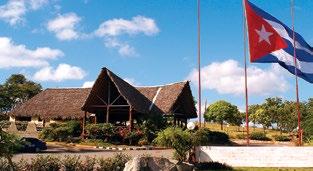
ation, nightclubs, ecological and sports tourism, as well as light gastronomy. Palmares has recent ly been directed towards the defense of sustainable gastronomy, hence the reopening in July of this year of the Fabio Restaurant, located in Havana’s Vedado and considered said entity’s first sustain able restaurant.
The corporation also operates franchises, and has contracts in several countries around the world, where the best of Cuban cuisine, cocktails, dance,
music and atmosphere can be enjoyed, under the guarantee of recognized brands and with high in ternational prestige for their service, cultural pro posal and unique atmosphere. Palmares will al low you to bring a little piece of Cuba to your coun try, granting franchises for restaurants, bars, café concert/restaurant and cabaret with shows, as re nowned and prestigious as the brands of Bodegui ta del Medio, Floridita, Gato Tuerto and the famous Tropicana Cabaret.
El año 2000 fue significativo dentro del proceso de mejora continua de las so luciones y equipos mediante el uso de la tecnología, en particular de las Tecnologías de la Información y la Comunicación (TIC), que alcanzaron un nuevo nivel con la apari ción de Internet y su generalización pasando de la gestión off-line (fuera de línea) a una in teracción on-line entre usuarios (ciudadanos, empleados, turistas) y con soluciones y apli caciones más personalizadas, móviles y per manentes, promovidas por los proveedores como «inteligentes», aprovechándose del tér mino inteligencia artificial, que tan buen mar keting genera.
La tecnología «inteligente» abre nuevas posibilidades para administrar la infraestruc tura, los equipos y servicios públicos digitali zados, perfeccionando los conceptos para el desarrollo y gestión de ciudades y territorios en el siglo XXI, uniendo la digitalización a la sostenibilidad, las energías limpias, la accesi bilidad y la mejora de la calidad de vida de habitantes y visitantes.

Los conceptos de ciudad inteligente (CI) y destino inteligente (DTI), así como edificio inteligente, edificio digitalizado, hogar inte ligente, hotel inteligente, se han estado ma nejando en Cuba desde hace varios años, lo que ha incentivado la promoción de diferen tes proyectos en organismos, empresas, uni versidades y otras entidades, entre los cuales pudiéramos citar los siguientes:
1. Cayo Largo del Sur, destino turístico inteligente en Cuba. Promovido por el MINTUR y el Grupo Empresarial Gran Caribe, propietario de las
instalaciones del cayo. Cuenta con colaboración de SEGITTUR de España.
2. Varadero, ciudad digital Proyecto del Parque Científico-Tecnológico de Matanzas S.A., vinculado a la Universidad «Camilo Cienfuegos», y el gobierno de la ciudad.
3. El Centro Histórico de La Habana hacia un modelo de ciudad inteligente, proyecto de la Oficina del Historiador de La Habana, con énfasis en el fomento de la economía creativa. Con financiamiento europeo y ha comenzado la automatización de pagos en el centro histórico y digitalización en museos.
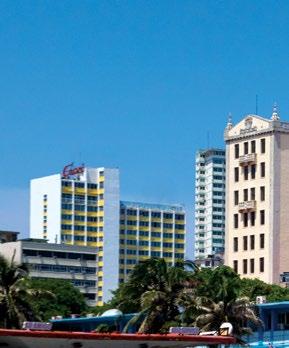
4. Hotel Nacional de Cuba, como hotel digital. Promovido por la instalación y la cadena hotelera Gran Caribe.
5. Calle inteligente (digital) de los cines, promovido por la Oficina del Historiador de Camagüey, la Universidad de Camagüey y en colaboración con el Laboratorio de Innovación de la Unión de Informáticos de Cuba.
Todos estos proyectos están encaminados a potenciar desarrollos de IoT, Industria 4.0, Big data, Inteligencia Artificial, Cadena de Blo ques, Pagos digitales, Criptomonedas, etc., ba sados en una conectividad a internet perma nente, la 4G y la 5G, la ampliación de las apli caciones y la computación en la «Nube» (cloud computing). Sin embargo, no es solo tecnolo gía, sino que deviene un cambio de paradig ma hacia una vida y un turismo más «inteligen te, seguro y sostenible», alineado con los Ob jetivos de Desarrollo Sostenible de las Nacio nes Unidas.
THE YEAR 2000 was significant in the pro cess of continuous improvement of solutions and equipment through the use of technology, partic ularly Information and Communication Tech nologies (ICT), which reached a new level with the appearance of the Internet and its general ization going from off-line management to on line interaction between users (citizens, employ ees, tourists) and with more personalized, mo bile and permanent solutions and applications, promoted by providers as “smart,” taking advan tage of the term artificial intelligence, which gen erates such good marketing.
El Hotel Nacional de Cuba ha estado entre los proyectos de edificio inteligente.
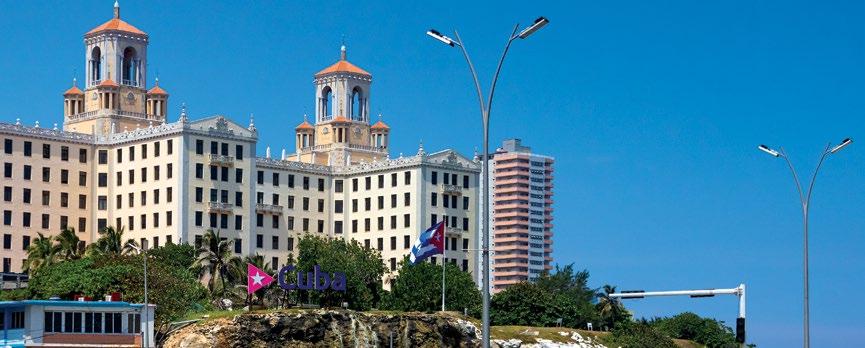
The National Hotel of Cuba has been among the projects of smart building.
“Smart” technology opens up new possibilities for managing the digitized infrastructure, equip ment and public services, perfecting concepts for the development and management of cities and ter ritories in the 21st century, combining digitization with sustainability, clean energy, accessibility and the improvement of the quality of life of inhabitants and visitors.
The concepts of SC and STD, and others such as smart building, digitized building, smart home, smart hotel, have been used in Cuba for several; promoting different projects in agencies, compa nies, universities and other entities, including:
1. Cayo Largo del Sur, Smart Tourist Destination in Cuba. Promoted by the Cuban Ministry
of Tourism (MINTUR) and the Gran Caribe Group, owner of the facilities on the key. It has the collaboration of SEGITTUR of Spain
2. Varadero, digital city. Project of the Scientific-Technological Park of Matanzas SA, linked to the Camilo Cienfuegos University and the City Government.
3. The Historic Center of Havana towards a smart city model, project of the Office of the Historian of Havana, with emphasis on the promotion of the creative economy. With European financing and has begun the automation of payments in the historic center and digitization in museums.
4. Hotel Nacional de Cuba, as a digital hotel. Promoted by the facility and the Gran Caribe hotel chain.
5. Smart (digital) street of Movie Theaters, promoted by the Office of the Historian of Camagüey, the University of Camagüey and in collaboration with the Laboratory of Innovation of the Union of Computer Scientists of Cuba.
All these projects are aimed at promoting the development of IoT, 4.0 Industry, Big data, Arti ficial Intelligence, Block Chain, digital payments, Cryptocurrencies, etc., based on permanent Inter net connectivity, 4G and 5G, the expansion of ap plications and cloud computing. But it is not just technology, it is a paradigm shift towards a “smart er, safer and more sustainable” life and tourism, aligned with the United Nations Sustainable Devel opment Goals.

Ubicado en la Habana Vieja, en tre las calles Sol, Cuba, Habana y Luz, el Convento de Santa Clara de Asís fue inaugurado en 1644 y constituye la primera de las tres edificaciones de monjas erigidas en la villa habanera.
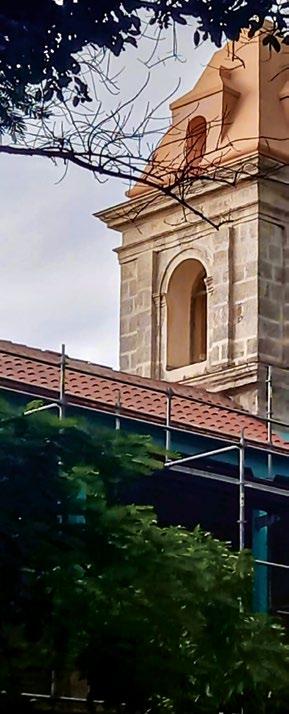
Capaz de impactar por su majestuosa sen cillez, actualmente es una de las más antiguas construcciones coloniales en Cuba. Tras con cluir las obras de su restauración, la edifica ción se convertirá en un centro de formación que pondrá a disposición de especialistas y estudiantes del Caribe la experiencia en ma teria de restauración acumulada, durante dé cadas, por la Oficina del Historiador de la Ciu dad de La Habana.
Para su restauración, el Programa Trans cultura: Integrando Cuba, el Caribe y la Unión Europea mediante la Cultura y la Creatividad, implementado por la UNESCO y financiado por la Unión Europea, ha facilitado la compra de más de 250 toneladas de materiales para la restauración del Convento de Santa Clara por valor de más de 1,7 millones de dólares hasta mayo de 2022, de acuerdo con la infor mación publicada en el sitio web del organis mo.
Esta cifra ha sido alcanzada tras la entrega de insumos como pinturas, morteros, mate riales para instalaciones eléctricas y sistemas de andamiaje, en lo que va de año, y que se van implementando a medida que avanzan las obras.
El Programa Transcultura apoya a la Ofi cina del Historiador de la Ciudad de La Ha bana (OHCH) en la realización de estos tra bajos, aportando asistencia técnica y finan ciación complementaria para la adquisición e importación de materiales necesarios pa ra la rehabilitación patrimonial del inmueble. Dicho esfuerzo se suma a la cooperación de otras organizaciones como la Agencia Italia na de Cooperación al Desarrollo, el Instituto Latino de Italia o el Fondo Mundial de Mo numentos.
◼ FOTOS/PHOTOS: © DELEGACIÓN
Actualmente, las obras se concentran en reparar cubiertas y estructuras, para lo que se usan maderas y tratamientos para las mis mas, andamios para realizar los trabajos con mayor seguridad, morteros especiales para las cabezas de los muros donde apoyan los techos, y pinturas para dar protección a los elementos ya restaurados, entre otros mate riales facilitados por Transcultura.
La contribución de Transcultura está des tinada principalmente a la recuperación del primer claustro del Convento, que alojará el aula magna y gran parte de los talleres y la boratorios del futuro Colegio Santa Clara pa ra la Formación en las Artes y los Oficios de la Restauración de Cuba y el Caribe, y que forma parte del Polo Caribeño de Formación Cultu ral impulsado por Transcultura.

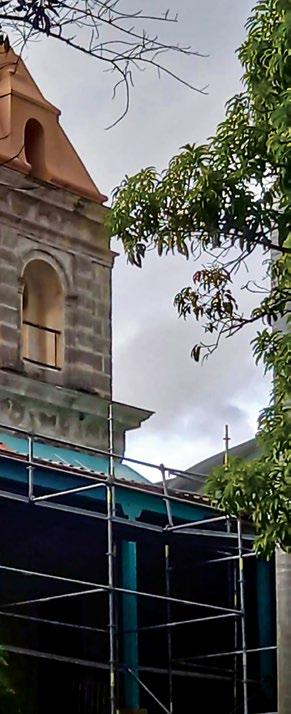
LOCATED in Old Havana, between Sol, Cuba, Habana and Luz streets, the Convent of Santa Clara de Asís was inaugurated in 1644 and is the first of the three nuns’ buildings erected in the township of San Cristobal de La Habana.

Capable of impressing with its majestic sim plicity, it is currently one of the oldest colonial buildings in Cuba. After completing its resto ration works, the building will become a train ing center that will make available to specialists and students from the Caribbean the experience in restoration matters accumulated over decades by the Office of the City of Havana Historian.
For its restoration, the Transcultura Pro gram: Integrating Cuba, the Caribbean and the European Union through Culture and Creativ ity, implemented by UNESCO and financed by the European Union, has facilitated the pur chase of more than 250 tons of materials for the restoration of the Santa Clara Convent worth more than 1.7 million dollars until May 2022, according to information published on the agen cy’s website.
So far this year this figure has been reached after the delivery of supplies such as paints, mortars, materials for electrical installations
and scaffolding systems, and which are being implemented as the works progress.
The Transcultura Program supports the Of fice of the City of Havana Historian (OHCH) in carrying out these works, providing technical assistance and complementary financing for the acquisition and import of materials necessary for the heritage rehabilitation of the building. This effort is added to the cooperation of other agencies such as the Italian Agency for Develop ment Cooperation, the Latin Institute of Italy or the World Monuments Fund.
Currently, the works are focused on repairing roofs and structures, for which wood and treat ments are used, scaffolding to carry out the work with greater safety, special mortars for the heads of the walls where the ceilings rest, and paints to protect the already restored elements, among other materials provided by Transcultura.
Transcultura’s contribution is mainly in tended for the recovery of the first cloister of the Convent, which will house the main hall and a large part of the workshops and laboratories of the future Santa Clara College for Training in the Arts and Restoration Works of Cuba and the Caribbean, and which is part of the Carib bean Center for Cultural Training promoted by Transcultura.
En el primer semestre de 2022, las llegadas de turistas internacionales casi se triplicaron (+172%), en comparación con el mismo periodo de 2021, lo cual significa que el sector se situó casi al 60% de los niveles anteriores a la pandemia de Covid-19, según datos ofrecidos por la Organización Mundial del Turismo (OMT).

El último Barómetro del Turismo Mundial del ente precisa que esta recuperación constante es reflejo de la fuerte demanda reprimida de viajes internacionales, así como de la flexibilización o el levantamiento de las restricciones de viaje hasta este otoño.
El secretario general de la OMT, Zurab Pololikashvili, ha afirmado que «el turismo sigue recuperándose de forma constante, a pesar de los diversos retos de naturaleza tanto geopolítica como económica. El sector está devolviendo la esperanza y las oportunidades a personas de todo el mundo, pero es el momento también de repensar el turismo y entender hacia dónde va y cómo repercute en las personas y el planeta».
In the first half of 2022, international tourist arrivals almost tripled (+172%), compared to the same period in 2021, meaning that the sector was at almost 60% of pre-Covid-19 pandemic levels, according to data provided by the World Tourism Organization (UNWTO).
The latest World Tourism Barometer of the entity states that this constant recovery reflects the strong repressed demand for international travel, as well as the relaxation or lifting of travel restrictions until this fall.
UNWTO Secretary-General Zurab Pololikashvili said that “tourism continues to recover steadily, despite various challenges of both a geopolitical and economic nature. The sector is restoring hope and opportunity to people around the world, but it is also time to rethink tourism and understand where it is going and how it affects people and the planet.”
During the period under review, an estimated 474
million international tourists traveled, compared to 175 million in the same months of 2021. In addition, 207 million international arrivals were registered, more than double the number registered in the same two months of last year.
More tourism spending, but new challenges arise
The ongoing recovery is also seen in outbound tourism spending from major source markets. A strong performance was also recorded in international air passenger traffic, with an increase of 234% in January-July 2022 (45% below 2019 levels) and a recovery in July to 70% of pre-pandemic traffic level, according to IATA.
On the other hand, a greater than expected demand has generated important operational and personnel challenges in companies and tourism infrastructures, especially in airports. In addition, the economic situation, aggravated by the conflict between Russia and Ukraine, represents a
Durante el periodo examinado, se estima que viajaron 474 millones de turistas internacionales, frente a los 175 millones de los mismos meses de 2021. Además, se registraron 207 millones de llegadas internacionales, más del doble de las registradas en los mismos dos meses del año pasado.
La recuperación en curso también se observa en el gasto del turismo emisor de los principales mercados emisores. También se registró un sólido comportamiento en el tráfico aéreo internacional de pasajeros, con un aumento del 234 % en enero-julio de 2022 (un 45% por debajo de los niveles de 2019) y una recuperación que lo situó en julio al 70% del nivel de tráfico anterior a la pandemia, según la IATA.
Una demanda mayor de lo previsto ha generado, por otra parte, importantes retos operativos y de personal en las empresas e infraestructuras turísticas, especialmente en los aeropuertos. Además, la situación económica, agravada
por el conflicto entre Rusia y Ucrania representa un importante riesgo a la baja. La combinación del aumento de los tipos de interés en las principales economías, el incremento de los precios de la energía y de los alimentos y las crecientes perspectivas de una recesión mundial, tal como indica el Banco Mundial, son las principales amenazas para la recuperación del turismo internacional en lo que queda de 2022 y 2023. La posible ralentización se refleja ya en el último Índice de Confianza de la OMT, que muestra unas perspectivas más cautelosas, así como en las tendencias de las reservas, que muestran signos de menor crecimiento.
Las perspectivas para el resto del año 2022 son prudentemente optimistas. Casi la mitad de los expertos (47%) ve perspectivas positivas para el periodo septiembrediciembre de 2022, mientras que el 24% no espera ningún cambio en particular y el 28%
significant downside risk. The combination of the rise in interest rates in the main economies, the increase in energy and food prices and the growing prospects of a world recession, as indicated by the World Bank, are the main threats to the recovery of international tourism in the remainder of 2022 and 2023. The possible slowdown is already reflected in the latest UNWTO Confidence Index, which shows a more cautious outlook, as well as in booking trends, which show signs of lower growth.
The outlook for the rest of 2022 is cautiously optimistic. Almost half of the experts (47%) see positive prospects for the period SeptemberDecember 2022, while 24% do not expect any particular
change and 28% consider that the situation could worsen. The experts also seem confident in 2023, since 65% predict an improvement in tourism results compared to 2022.

However, the uncertain economic environment appears to have reversed the prospects for a return to pre-pandemic levels in the short term. Some 61% of experts do not now see a possible return of international arrivals to 2019 levels until 2024 or later, while those who indicate a return to pre-pandemic levels in 2023 have decreased (27%) compared to the May survey (48%). According to experts, the economic environment continues to be the main factor hindering the recovery of international tourism. Rising inflation and oil prices translate into higher transportation and accommodation costs, while reducing consumers’ purchasing power and savings.
considera que la situación podría empeorar. Los expertos también parecen confiar en 2023, ya que el 65% vaticina una mejora de los resultados turísticos con respecto a 2022.
No obstante, el incierto entorno económico parece haber invertido las perspectivas de volver a los niveles anteriores a la pandemia a corto plazo. Alrededor del 61% de los expertos no ven ahora un posible retorno de las llegadas internacionales a los niveles de 2019 hasta 2024 o después, mientras que los que indican un retorno a los niveles pre pandémicos en 2023 ha disminuido (27%) en comparación con la encuesta de mayo (48%). Según los expertos, el entorno económico sigue siendo el principal factor que lastra la recuperación del turismo internacional. El aumento de la inflación y la subida de los precios del petróleo se traducen en un incremento de los costes del transporte y el alojamiento, al tiempo que merman el poder adquisitivo y el ahorro de los consumidores.
Esta recuperación es reflejo de la fuerte demanda reprimida de viajes internacionales.
En la isla caribeña operan actualmente unas 45 aerolíneas extranjeras con vuelos regulares y chárter. De acuerdo con datos ofrecidos por el director de Operaciones de la Empresa Cubana de Aeropuertos y Servicios Aeropor tuarios de Ecasa S.A, José Ramón Hernández, esas líneas aéreas realizan cerca de 400 operaciones semanales en todo el país.
El principal mercado emisor de viajeros hacia la isla es Estados Uni dos, seguido de Canadá, América Latina y el Caribe y por último Euro pa, según Prensa Latina.
Entre las compañías con más vuelos regulares hacia la capital del país mencionó a America Airline y Southwest Airlines de Estados Uni dos, Air France e Iberia, y en el resto del país las aerolíneas canadien ses que poco a poco han crecido y amplían frecuencia.
Para la próxima temporada de invierno se espera un incremento entre un 15-20 por ciento de las frecuencias de vuelos y las operacio nes de más compañías aéreas, entre ellas United Airlines, Aeroméxico y Sky High (República Dominicana), esta última con vuelos regulares a La Habana y Santiago de Cuba, mientras las que ya operan incremen tarán sus frecuencias semanales por ser la etapa de mayor demanda.

También Air Serbia y Air Argelia contactaron con las entidades ae roportuarias cubanas con intenciones de comenzar vuelos a la isla, además la compañía canadiense Swoop, subsidiaria de WestJet, am pliará su horario de invierno hacia Cuba con nuevas rutas, frecuen cias y servicios.
A partir de este noviembre, American Airlines (AA) podría incre mentar a 12 sus vuelos diarios a cinco ciudades de la isla caribeña. En su propuesta, AA pretende una frecuencia diaria entre el Aeropuerto Internacional de Miami hasta Matanzas/Varadero; dos a Santa Clara y uno al día a Holguín, Camagüey y Santiago de Cuba.
Cuba comenzó a recibir nuevamente turistas procedentes de Ru sia. De acuerdo con una nota del importante operador turístico Pe gas Touristik, los programas de vuelos con esos paquetes son organi zados por una asociación con la aerolínea Nordwind Airlines. Los vue los tendrán una frecuencia de cuatro por semana, en la ruta MoscúVaradero atendida por aviones Boeing-777-300ER, con tiempo de via je estimado de 13 horas.
El delegado del turismo de Cuba en Canadá, Lessner Gómez, infor mó que desde el pasado 28 de octubre, Air Canada reinició los vuelos directos a La Habana desde la ciudad de Toronto. Recientes informes de las autoridades insulares resaltan un incremento del interés de las aerolíneas en los viajes a este país, sobre todo de cara a la recupera ción turística de la nación.
La línea aérea venezolana Conviasa amplió a 10 sus vuelos semana les a la isla. Según anunció su representante, Vicente Naranjo, la com pañía prevé unir a La Habana con Las Piedras, una zona franca de Pa raguaná en el venezolano estado de Falcón, lugar muy atractivo pa ra el turismo recreativo y de compras. También se proponen conectar próximamente a la capital cubana con Panamá, como ya lo hace con Managua.
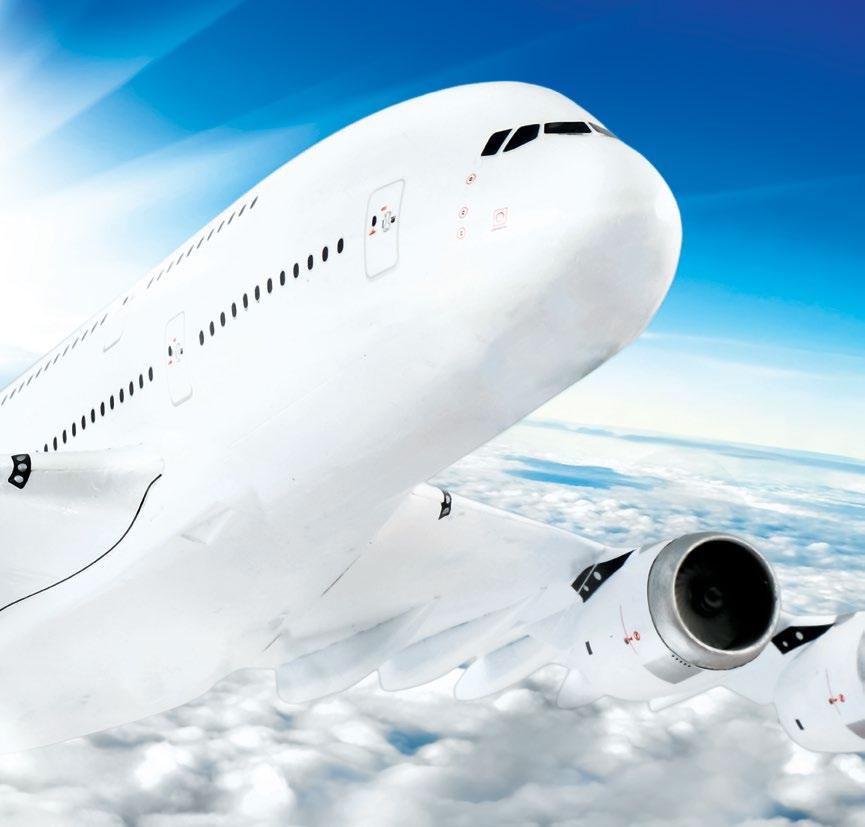
SOME 45 foreign airlines currently operate on the Caribbean island with regular and charter flights. According to data offered by the director of operations of the Cuban Airport and Airport Services Company of Ecasa S.A, José Ramón Hernández, these airlines carry out nearly 400 weekly operations throughout the country.
The main source market for travelers to the island is the United States, followed by Canada, Latin America and the Caribbean, and finally Europe, according to Prensa Latina news agency.
Among the companies with the most regular flights to the country’s capital, he mentioned American Airlines and Southwest Airlines from the United States, Air France and Iberia, and in the rest of the country the Canadian airlines that have been gradually growing and increasing their frequencies.
For the next winter season, an increase of between 15-20 percent in flight frequencies and the operations of more airlines is expected, including United Airlines, Aeroméxico and Sky High (Dominican Republic), the latter with regular flights to Havana and Santiago de Cuba, while those that already operate will increase their weekly frequencies as it is the stage of greatest demand.
Air Serbia and Air Algeria also contacted Cuban airport entities with the intention of starting flights to the island and the Canadian company Swoop, a subsidiary of WestJet, will extend its winter schedule to Cuba with new routes, frequencies and services.
Starting this November, American Airlines (AA) could increase its
daily flights to five cities on the Caribbean island to 12. In its proposal, AA intends a daily frequency between Miami International Airport to Matanzas/Varadero; two to Santa Clara; and one a day to Holguín, Camagüey and Santiago de Cuba.
Cuba again started receiving tourists from Russia. According to a note from major tour operator Pegas Touristik, the flight programs with these packages are organized by a partnership with Nordwind Airlines. The flights will have a frequency of four per week, on the Moscow-Varadero route served by Boeing-777-300ER aircraft, with an estimated travel time of 13 hours.
The Cuban tourism delegate in Canada, Lessner Gómez, reported that since last October 28, Air Canada restarted direct flights to Havana from the city of Toronto. Recent reports from the island authorities highlight an increase in airlines’ interest in trips to this country, especially in the face of the nation’s tourism recovery.
The Venezuelan airline Conviasa expanded its weekly flights to the island to 10. As announced by its representative, Vicente Naranjo, the company plans to link Havana with Las Piedras, a free zone in Paraguaná in the Venezuelan state of Falcón, a very attractive place for recreational and shopping tourism. It also intends to connect the Cuban capital with Panama soon, as it already does with Managua.
CARICOM deberá desempeñar un papel integral para ha cer factibles los viajes multidestino a la región. La afirma ción la hizo el ministro de Turismo de Jamaica, Edmund Bartlett, quien considera que las vacaciones multidesti no pueden ser la respuesta para sostener el turismo en el Caribe.
Bartlett defendió además la necesidad de una aerolí nea regional para apoyar la puesta en práctica con éxito del multidestino en el área caribeña.
El ministro señaló que debemos «armonizar los proto colos en relación con el uso de nuestro espacio aéreo, pa ra que al ingresar al Caribe podamos ser domésticos pa ra todos los demás países que forman parte de esta aso ciación».
La propuesta de viajes multidestino y una aerolínea re gional fue presentada por Edmund Bartlett a varios mi nistros de Turismo, secretarios permanentes y otros fun cionarios en un Foro de Políticas de Alto Nivel para desa rrollar la resiliencia de las pequeñas empresas turísticas en el Caribe ante los desastres.
Las presentaciones en el foro y las mejores prácticas que surgieron de este, podrán ser usadas para «crear he rramientas en aras de ayudar a una mejor gestión y desa rrollar resiliencia, particularmente entre nuestras peque ñas y medianas empresas», aseguró Bartlett.
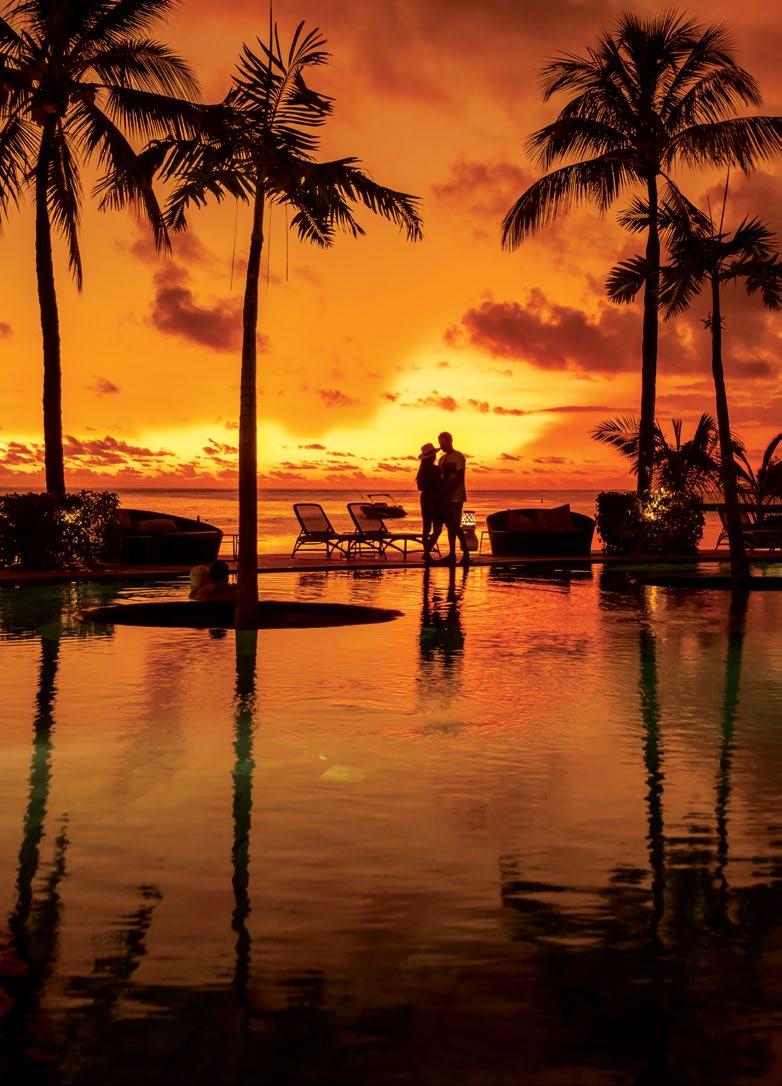
CARICOM will need to play an integral role in making multi-destination travel to the region feasible. The statement was made by Jamaican Minister of Tourism Edmund Bartlett, who believes that multi-destination vacations can be the an swer to sustain tourism in the Caribbean.
Bartlett also defended the need for a regional airline to support the successful implementation of multi-destination in the Caribbean area.
The minister pointed out that the region must harmonize the protocols in relation to the use of its airspace, so that when entering the Caribbean, it will be possible to be domestic for all the other countries that are part of this association.
The proposal for multi-destination travel and a regional airline was presented by Edmund Bartlett to several Minis ters of Tourism, Permanent Secretaries and other officials at a High-Level Policy Forum to develop the resilience of small tourism businesses in the Caribbean in the face of disasters.
The presentations at the forum and the best practices that emerged from it can be used to create tools to help better man age and develop resilience, particularly among the region’s small and medium-sized businesses, Bartlett said.

